|
ID |
Nickname |
Country / City |
Languages |
Taxonomies |
Comment |
Project / Group |
Map |

|
46164
|
|
United States
Honolulu
|
|
|
The sign has hawaiian and English on it. Showing off Duke Kahanamoku, it’s more of a tourist commodity that’s more for someone to use as decoration rather than informational.
-NIP
|
Multilingual Hawaiʻi
|
|
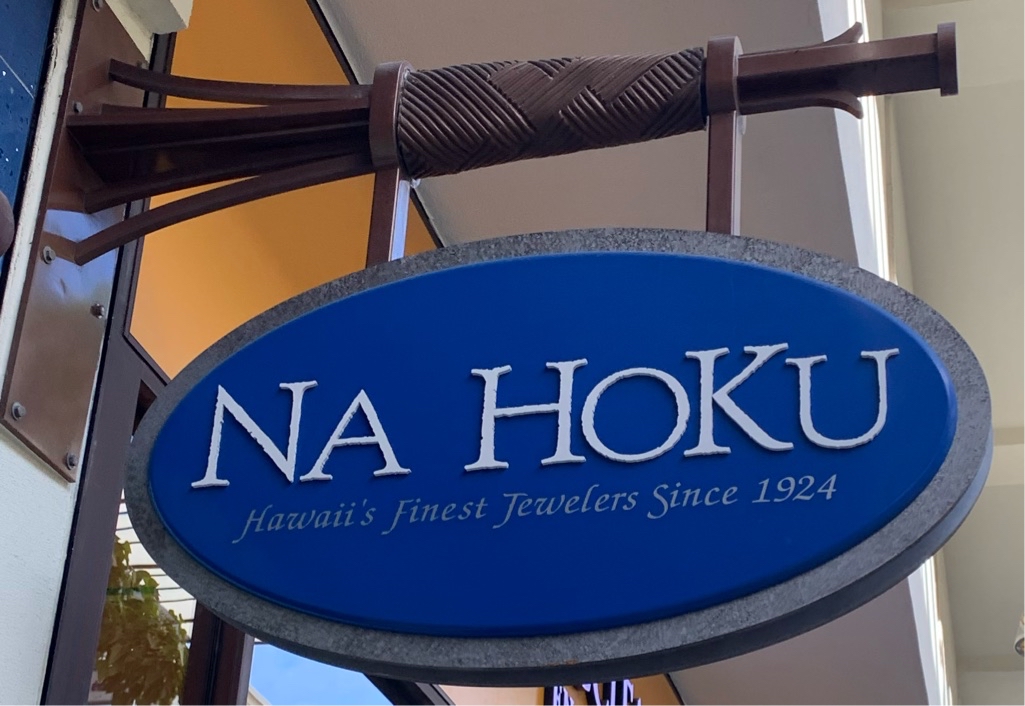
|
46165
|
|
United States
Honolulu
|
|
|
This is a store sign, permanent fixture, advertising a jewelry store, Na Hoku means stars, it’s a more local staple that’s been around for a while (since 1924) both for tourists and locals.
-NIP
|
Multilingual Hawaiʻi
|
|
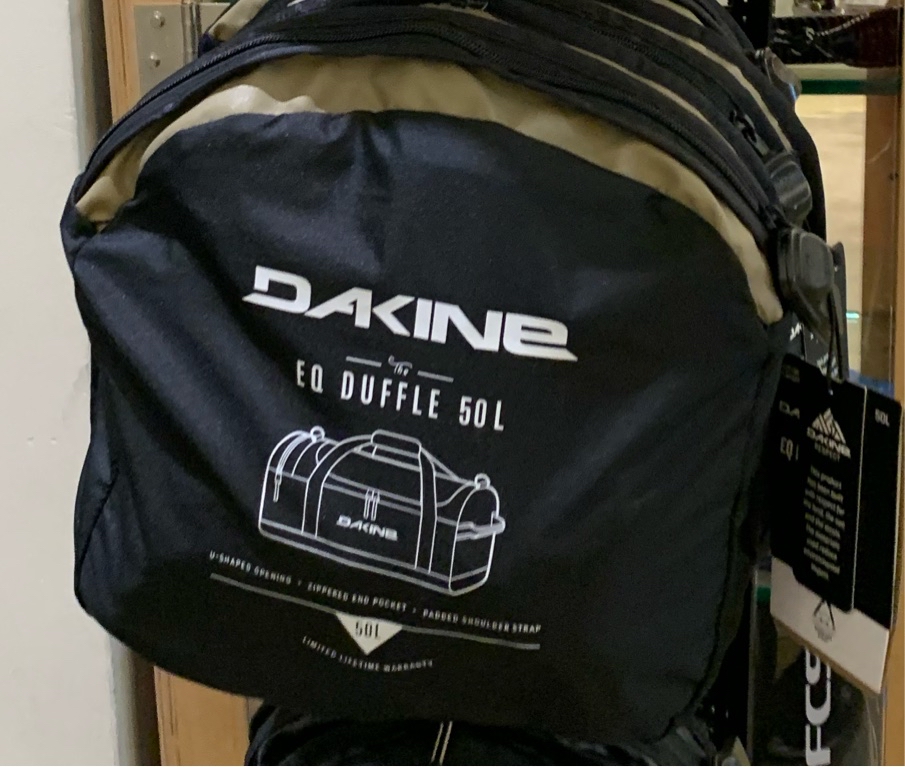
|
46166
|
|
United States
Honolulu
|
|
|
This is an example of Pidgin. It’s on a bag being sold so it’s more a commodity. I’d associate the brand Da Kine more with locals over tourists so it caters more to them. Though is accessible to both
-NIP
|
Multilingual Hawaiʻi
|
|
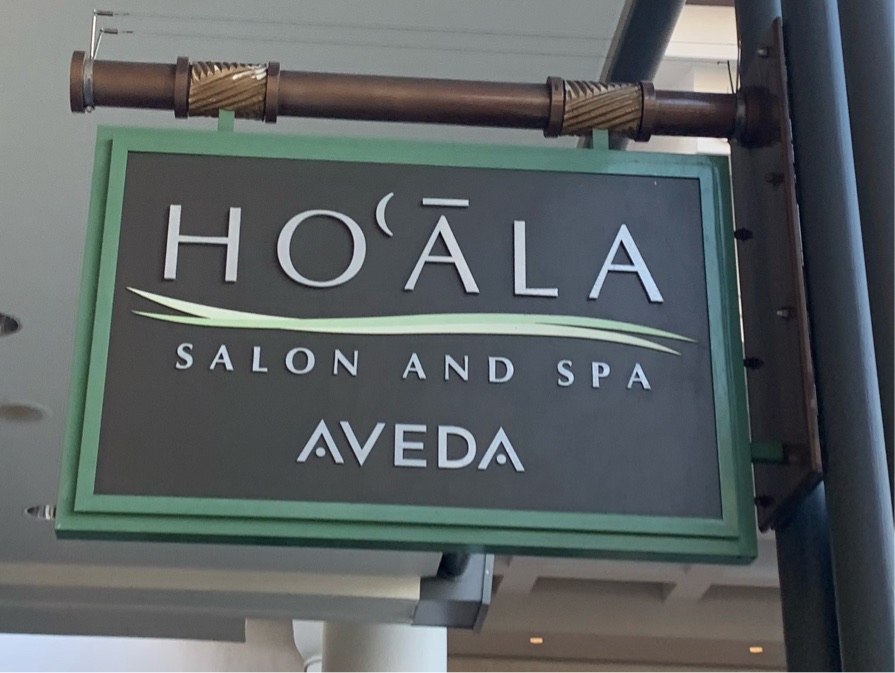
|
46167
|
|
United States
Honolulu
|
|
|
This is an example of Hawaiian. Ho’Āla meaning to awaken, rise up. It’s a sign advertising a spa so it’s more neutral in advertising to both tourists and locals.
-NIP
|
Multilingual Hawaiʻi
|
|
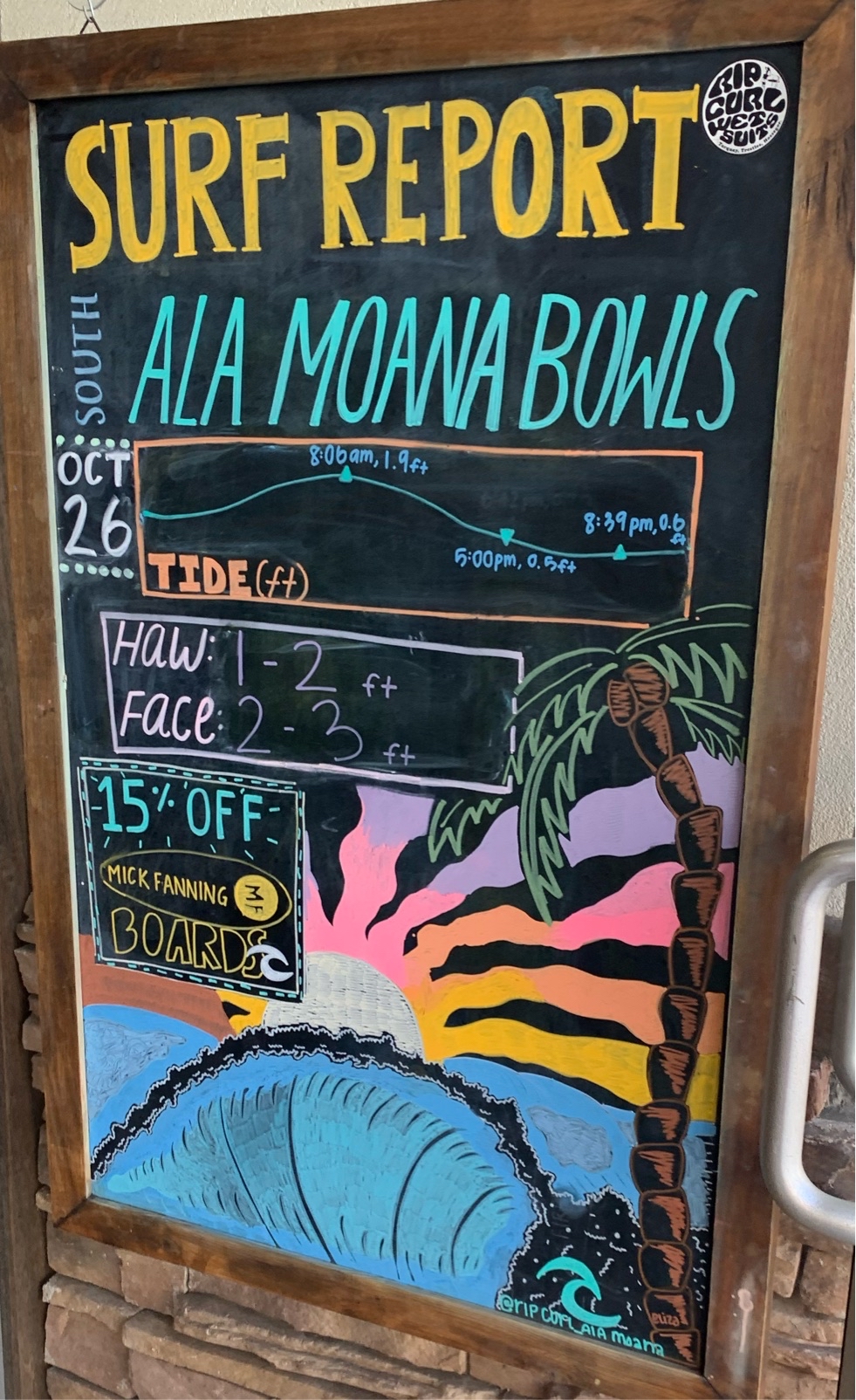
|
46168
|
|
United States
Honolulu
|
|
|
This has English, Hawaiian, and Pidgin. It’s a mock up surf report at Ala Moana Bowls which is a local spot that’s named with its Pidgin. It was outside of a clothing store so it’s probably more for tourists but has a touch of local flavor in the writing to make it more neutral.
-NIP
|
Multilingual Hawaiʻi
|
|

|
46170
|
|
United States
Honolulu
|
|
|
This would be an example of Hawaiian. It’s pretty neutral on being for both locals and tourists mainly because it’s in Longs. It uses Keiki to communicate to both that it’s for kids and has nice fun designs that could be appealing to either side.
-NIP
|
Multilingual Hawaiʻi
|
|
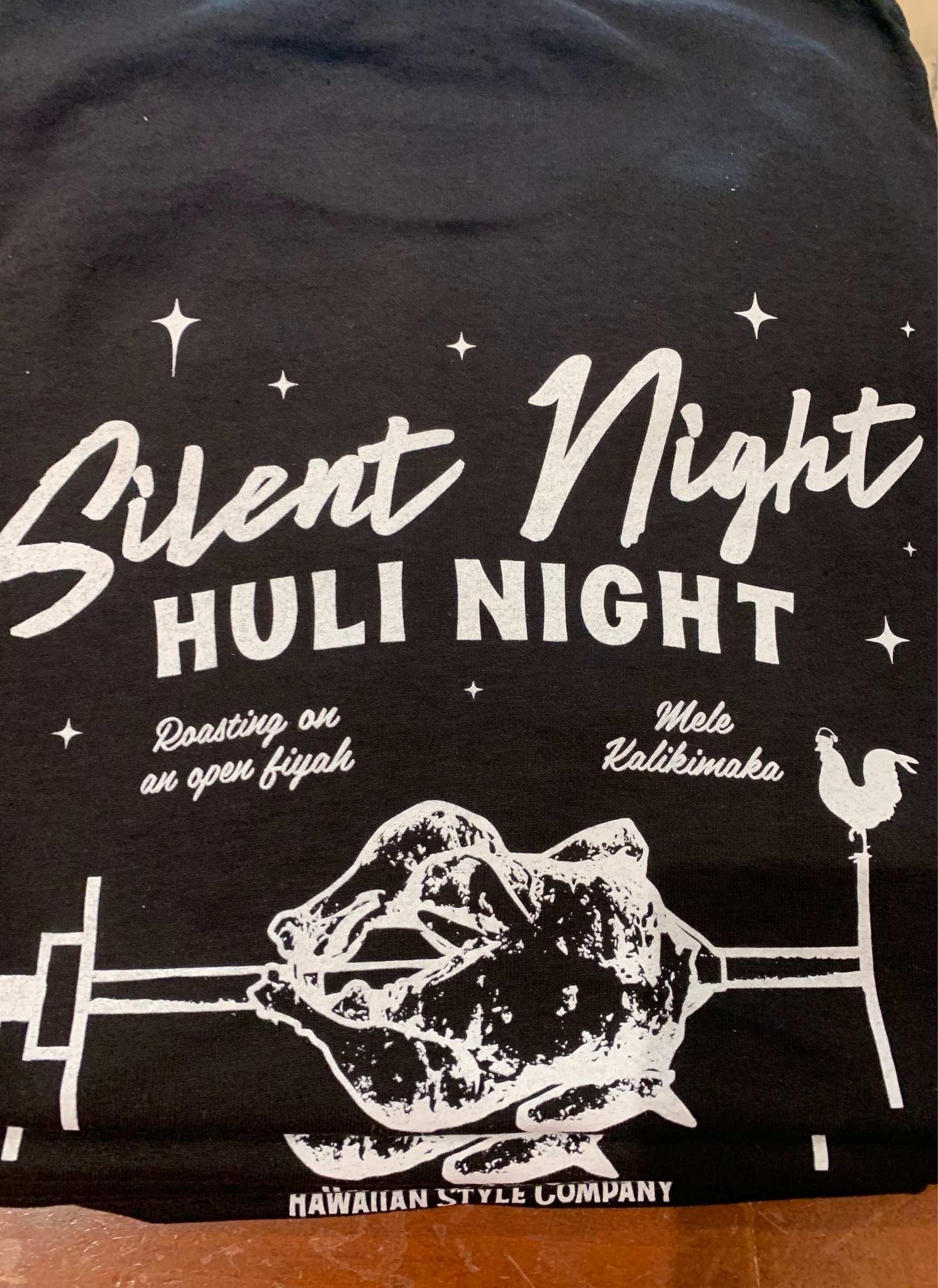
|
46171
|
|
United States
Honolulu
|
|
|
This is an example of Pidgin and Hawaiian. With Huli and being a cooking style. And Mele Kalikimaka being merry Christmas in Hawaiian. While fiyah is spelt in the Pidgin style and the whole of the shirt being a more local oriented design.
-NIP
|
Multilingual Hawaiʻi
|
|
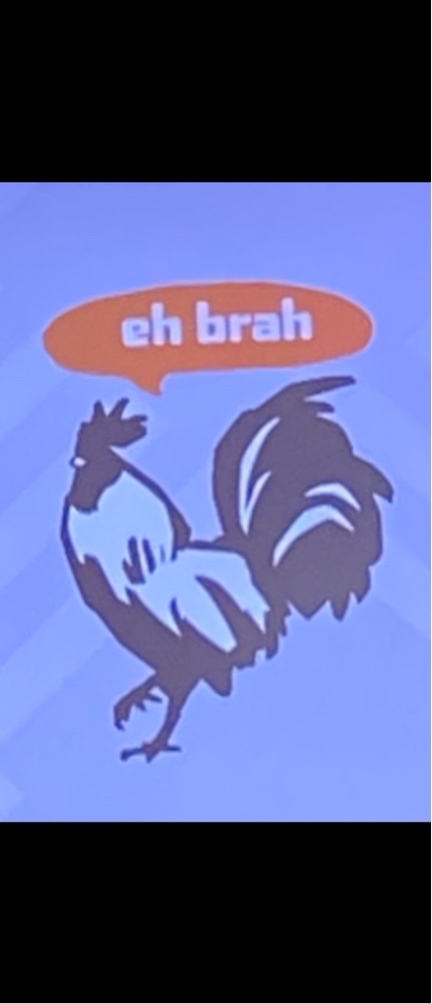
|
46172
|
|
United States
Honolulu
|
|
|
Image of Rooster speaking pidgin 2 things known in Hawaii being displayed. “Eh brah” meaning can be used like saying Eh brah no worries. LM
|
Multilingual Hawaiʻi
|
|

|
46173
|
|
United States
Kaneohe
|
|
|
Showing the beauty/teaching about Hawaii wildlife as well as hoping to protect them. Message can be for locals and tourist as well because some English translation in certain parts can be found on other images. LM
|
Multilingual Hawaiʻi
|
|

|
46174
|
|
United States
Honolulu
|
|
|
Poster at the doctors office. Meant to explain being safe around children if you in fact smoke and the consequences you may receive as a result. I would say it be more for locals because people whom live and drive here on the daily are most likely to see it. LM
|
Multilingual Hawaiʻi
|
|
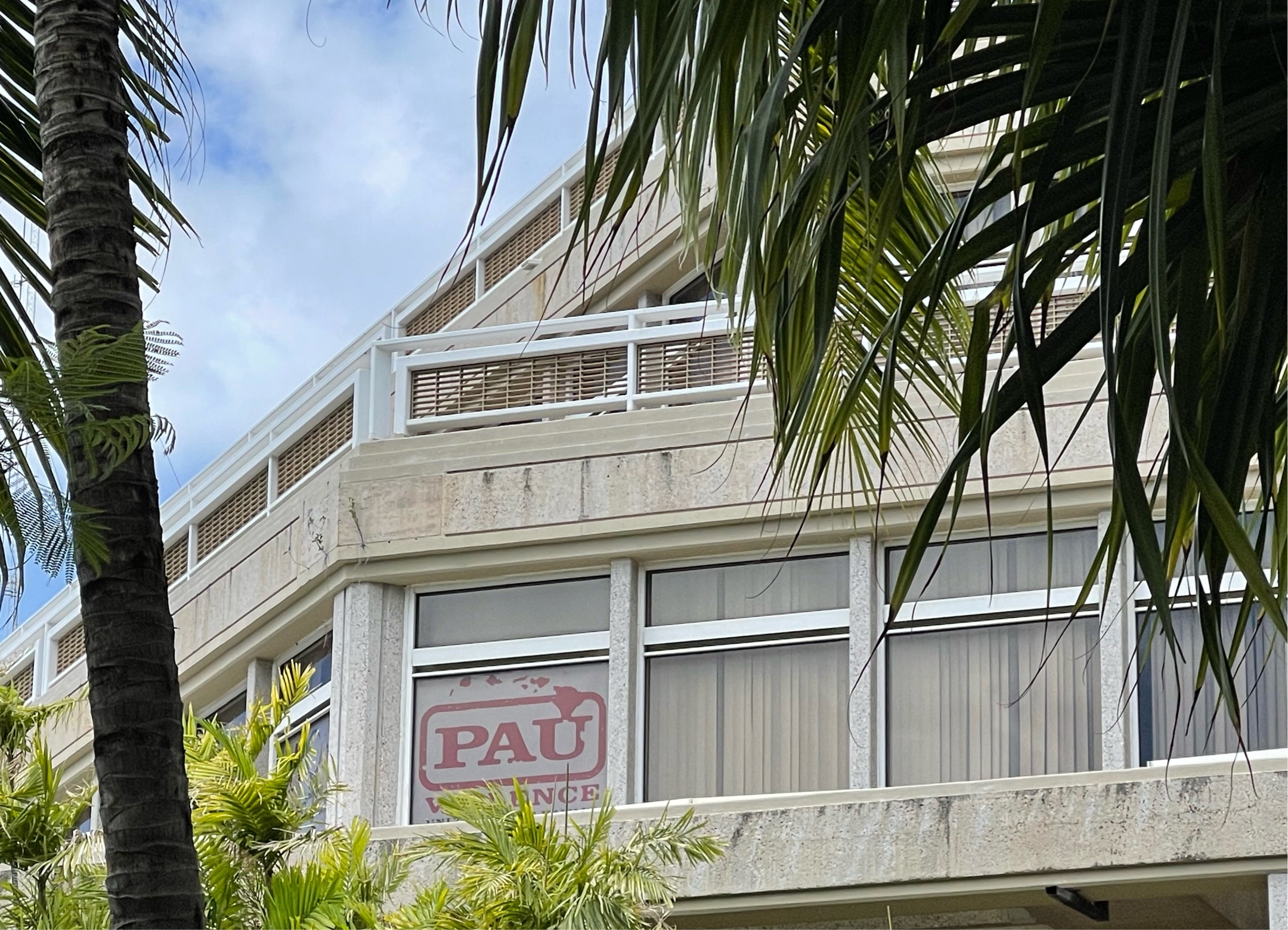
|
46433
|
|
United States
Honolulu
|
|
|
—
|
Multilingual Hawaiʻi
|
|
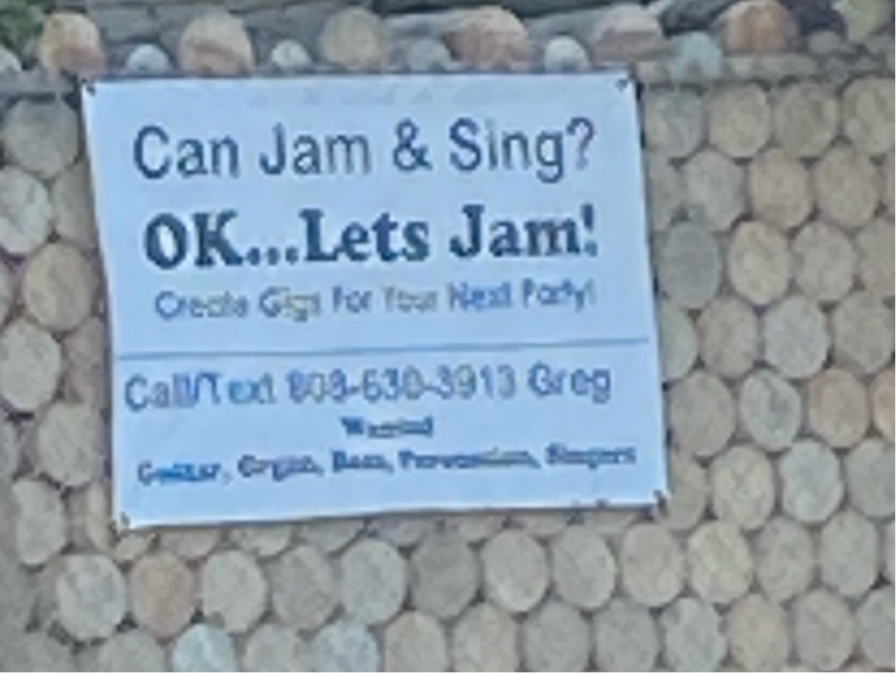
|
46434
|
|
United States
Pearl City
|
|
|
Here we see Pidgin being used on an advertisement inviting people to create music for a future party or event. This sign was located along a busy road and sometimes it’s difficult for drivers to actually read the sign. The Pidgin being used here is in large font so as to attract the locals on their commute. As this is a local community, it seems appropriate to use Pidgin.
|
Multilingual Hawaiʻi
|
|

|
46435
|
|
United States
Honolulu
|
|
|
The domain in this photo is novelty. This is a get well greeting card. Pidgin is used throughout the phrase like “you no need”, “dis” and “stay from”. A direct translation of this phrase would be “you don’t need to ask who this card is from”. The intended audience in this case is towards the locals of Hawaii. This is printed probably on card stock. The Pidgin in this case is to connect locals to this greeting card to make them want to buy it. - CQ
|
Multilingual Hawaiʻi
|
|
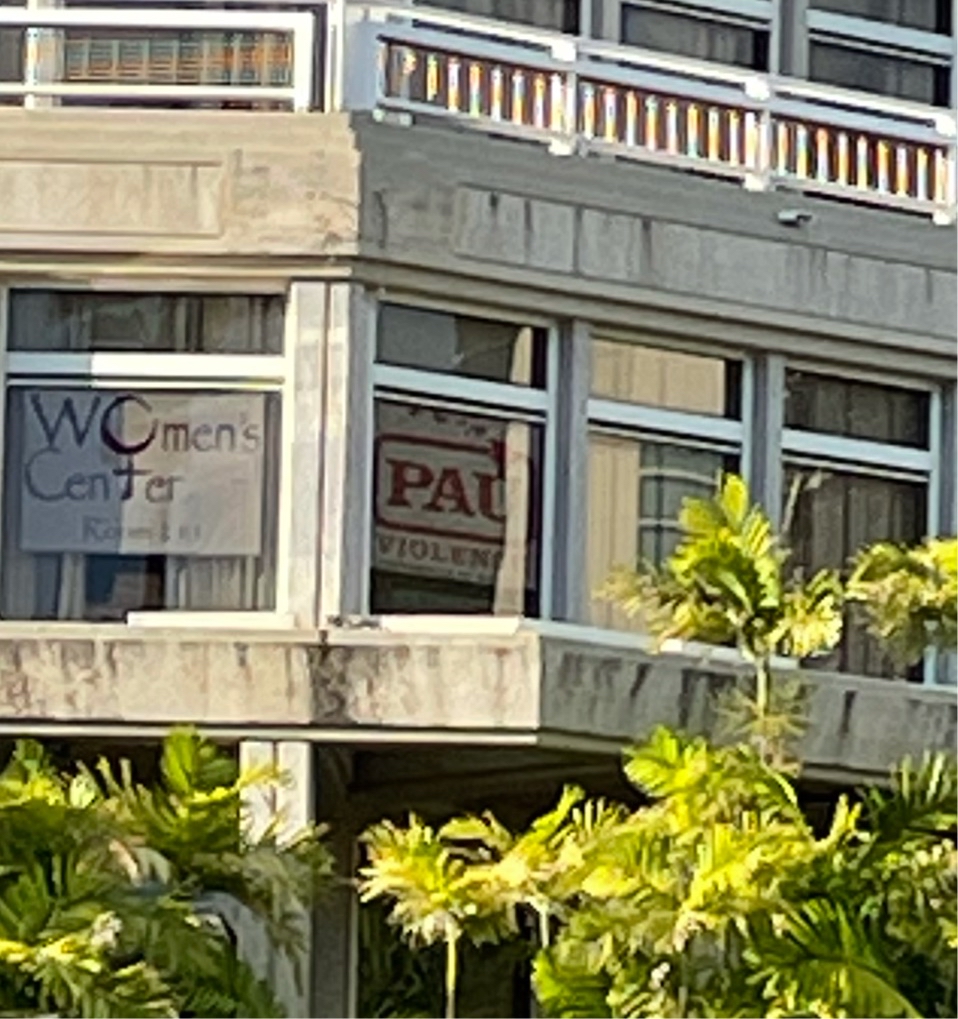
|
46538
|
|
United States
Honolulu
|
|
|
(SP) (Check in #3) though a bit hard to get a picture of, this is a semi-permanent vinyl window sign on a building on the UH Manoa campus, in the domain of student life/education. It uses the Pidgin word Pau (end, all gone) alongside the English word violence to express their views of getting rid of violence. It is also a pun, because PAU is an acronym for the on-campus organization to whom this sign belongs to. It seems they used Pidgin here to help the organization feel connected to Local students and to the school, maybe to encourage students to feel closer to the organization and reach out if they need help. The Pidgin is in huge letters compared to the English to emphasize their goal (to end violence) and because it is the name of the organization.
|
Multilingual Hawaiʻi
|
|

|
47066
|
|
ʻAmelika Hui Pū ʻIa
Honolulu
|
|
|
HK – WE GO BEACH! – If you are a local this is straight pidgin, this is a poster that I found on one of the floors here at the freshman towers. I think a lot of the residents here may think it's bad grammar but we locals would only know, this is how we speak. One of the issues I think this kind of establishes is how we can bridge the gap of people who know pidgin and who donʻt.
|
Multilingual Hawaiʻi
|
|

|
47067
|
|
ʻAmelika Hui Pū ʻIa
Honolulu
|
|
|
HK – F**A is our pidgin slang for the F word. This is on numerous signs throughout Oʻahu and this seems like just some person wanting to be a nuisance. It's just graffiti and nothing more. Haole could eventually figure what this is without any knowledge of Pidgin.
|
Multilingual Hawaiʻi
|
|

|
47068
|
|
ʻAmelika Hui Pū ʻIa
Honolulu
|
|
|
HK - Here on one of the floors of the Aloha Towers in Mānoa, we have a wall of Hawaiian words up for display. Its targeted the residents of the towers. Ment to educate the Haole (Foreign) residents and also some locals who donʻt know the language.
|
Multilingual Hawaiʻi
|
|

|
47071
|
|
ʻAmelika Hui Pū ʻIa
Honolulu
|
|
|
HK - Pāʻina Lānai is the food court in the International Market down in Waikīkī. Pāʻina from ʻŌlelo Hawaiʻi is translated to “sharing a meal” and Lānai is like a porch area or a terrace. In the sense of putting these two words together, you create the English equivalent of a Food Court, although this isn't the direct translation, it can be interpreted like a Food Court. This commodification of Hawaiian to English is used all over Waikīkī with the International market being one place that uses and embraces the Hawaiian Culture for all Tourists to see. This targets tourists while also enticing locals with aesthetics.
|
Multilingual Hawaiʻi
|
|
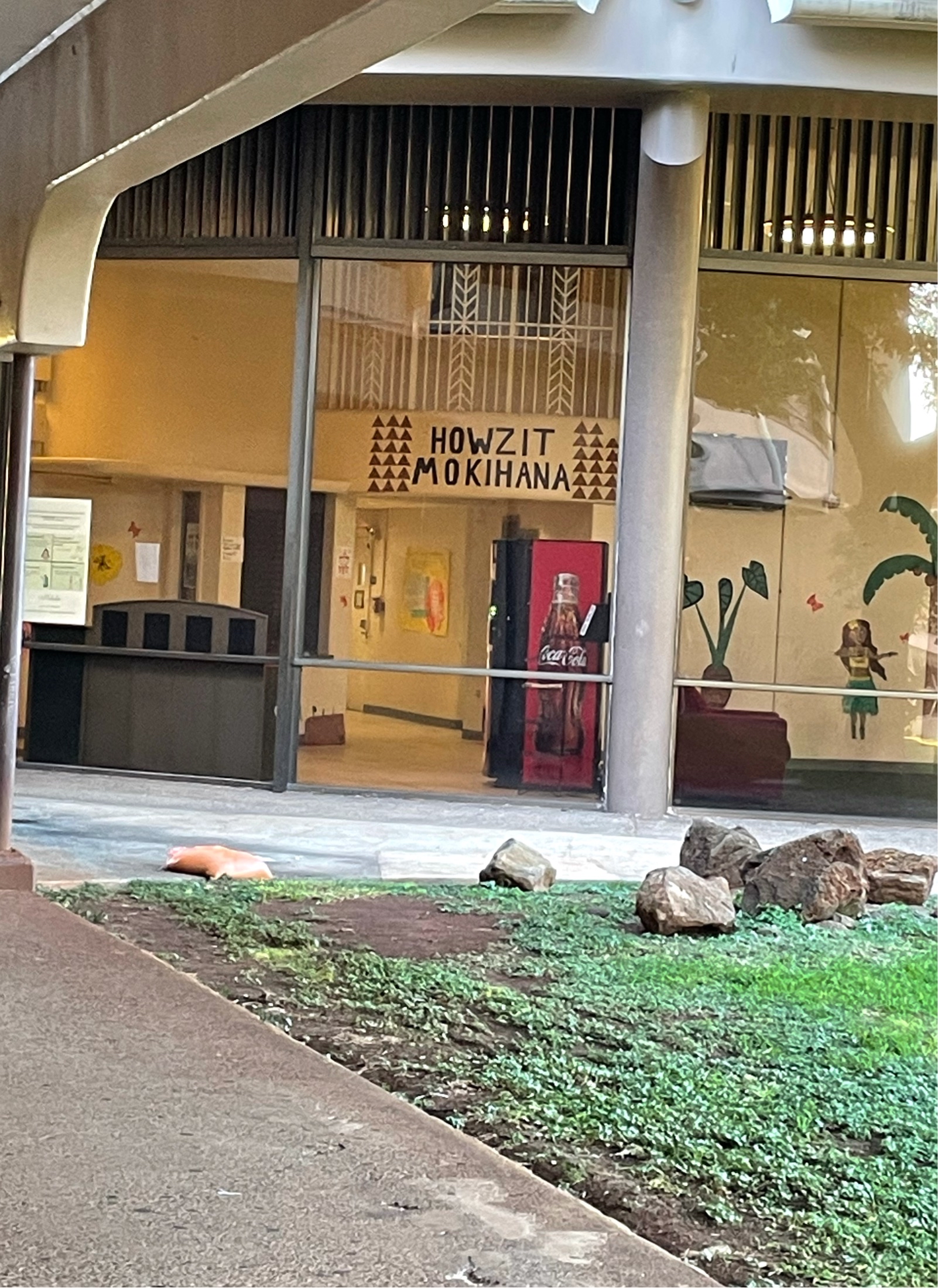
|
46539
|
|
United States
Honolulu
|
|
|
(SP)(check in #3) This photo has both Pidgin and Hawaiian in it, but I want to use it as a Pidgin photo. This is a photo of the common Pidgin greeting “howzit” permanently painted in the entrance way of a dormitory, in the domain of student life/education. Clearly this phrase was used to catch the attention and be understood by both Local students of students from out of state, since almost everyone is familiar with this phrase. It may have been used to make the dormitory feel more genuinely Hawaiian, and a more relaxing and easy-going place for students to live. It makes any student who walks in immediately feel like they are being greeted by a friend.
|
Multilingual Hawaiʻi
|
|
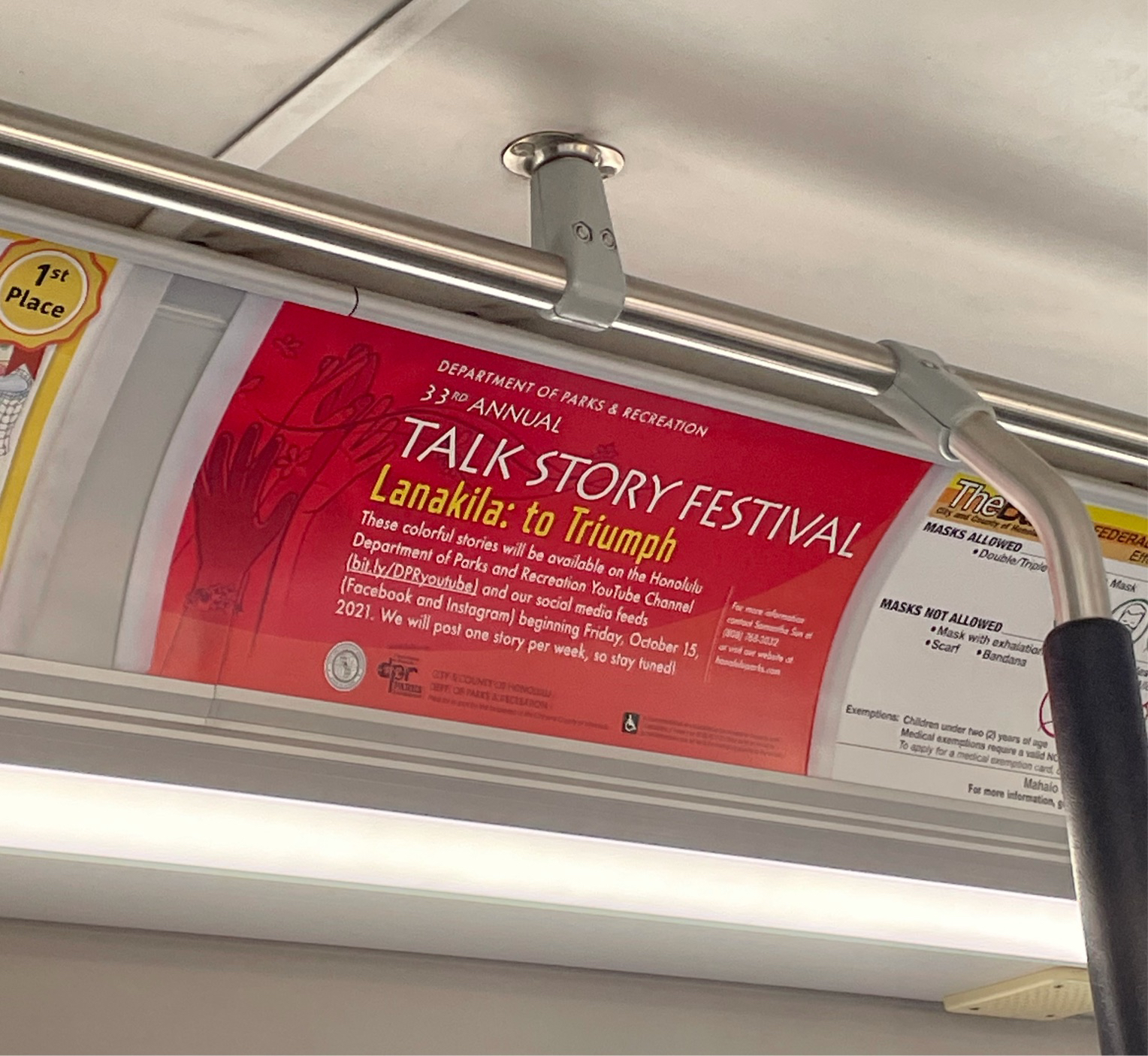
|
46540
|
|
United States
Honolulu
|
|
|
(SP)(check in #3) this photo has both Pidgin and English in it, but I want to use it as a Pidgin photo. This is a non-permanent advertisement found in a city bus in Honolulu, in the domain of transportation/advertising. The brightest, most eye catching section of the ad is in Pidgin (talk story). The Pidgin, when combined with the Hawaiian word and topic of the ad, was clearly made for Locals who understand Pidgin/Hawaiian and have an interest in Hawaiian cultural activities. English is in smaller letters with the instructions to access these stories, so that anyone, Local or non-local, will be able to access them. The topic of this poster is about working passionately to keep Hawaiian culture and story telling alive, hence the use of the Hawaiian word for triumph and the fiery red color.
|
Multilingual Hawaiʻi
|
|